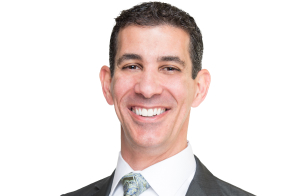In the face of a deadly pandemic, the American people have done an extraordinary job of social distancing to slow the spread of COVID-19. However, the pendulum may have swung too far when it comes to individuals’ reluctance to seek necessary medical interventions. Emergency department (ED) volumes have plummeted, and provider offices are empty in many parts of the country as people delay urgent and even life-saving care. Many physicians and epidemiologists now worry that the fear of visiting hospitals, EDs, and provider offices may represent a public health threat as deadly as the coronavirus itself.
This much is clear: We need to ensure that our communities know it’s safe—and vitally important—to access their primary care physician, emergency and urgent care. In this article, we’ll take a closer look at the current ED avoidance trend and its impact on public health. I’ll also share how Vituity is partnering with hospitals to help more patients gain safe access to needed care and using technology to scale resources and expand each hospital’s reach. Our goal is to avoid delays in care by connecting patients to the right care at the right time—which is especially crucial in the context of a global pandemic.
Where Have all the Patients Gone?
In the early days of the pandemic, U.S. hospitals responded by canceling elective procedures and admissions. However, it appears we may not have done enough to reassure patients that emergency care is always available. At present, ED volumes and hospital census are historically low throughout much of the country, prompting concerns about those “missing” patients. Our EDs are not seeing the types of emergencies unaffected by shelter-in-place guidelines, like heart attacks, strokes, and acute surgical emergencies such as appendicitis.
When emergent patients do come in, doctors report that their conditions are worse than they should have been due to delayed care, making treatment more complicated and recovery periods longer than expected. It is unlikely that heart attack and stroke incidence has declined, especially during this stressful time. Many of us worry that we’ve increased mortality and morbidity in disease states that is otherwise preventable.
This fear is backed up by reports out of New York City, the current epicenter of the pandemic in the United States. Between March 20 and April 5, the number of 911 calls reporting a cardiac arrest at home soared 400% over the previous year. It’s probable that many of these patients were victims of undiagnosed COVID-19. But others likely died of heart attacks and chronic disease complications after delaying medical care.
New York’s experience suggests that fear of hospitals could create a second wave of both COVID-19 patients and those with unmet medical needs. As an emergency physician, I know that delaying relatively routine care can precipitate a real emergency, resulting in riskier surgery and more serious complications. This is especially true in cases of heart disease or stroke. “Elective” care (for example, a cancer-related surgery) postponed at the start of the pandemic may now be growing more urgent eight weeks later.
Bridging the Care Gap
Hospitals should consider a range of approaches to help patients in their communities access care through appropriate channels.
- Reassure the public that it’s safe for anyone experiencing urgent symptoms to come to the ED or hospital. This is difficult at a time when patients are overwhelmed with conflicting, anxiety-provoking information from news outlets and social media. In addition, patients may have lost contact with primary care providers who could otherwise help to spread the word.
- Deploy solutions, such as telehealth, that help patients access care where and when they need it, from the safety of their home. With many primary care offices shuttered and urgent care centers turning away respiratory cases, patients have limited options for care outside the ED. A recent survey shows that nearly 50% of physicians are currently using telehealth, up from 18% in 2018. This is due to the increased demand for remote consultations as well as the recent CMS expansion of telehealth guidelines that permits more front-line teams to practice telehealth. This is especially critical for hospitals in rural areas, where care options are more limited.
- Communicate the message that patients should come to the hospital in the event of an emergency. By leveraging appropriate media and sending a strong message that critical care cannot wait, hospitals can show that they are prepared to safely treat patients experiencing symptoms requiring acute care.
Explore our downloadable toolkit for engaging with your community.
Reconnecting Patients and Hospitals
At Vituity, we want to encourage the right kind of care at the right time, through the right channel. By doing so, we continue to protect our communities from the spread of COVID-19 while ensuring those with urgent medical needs aren’t being ignored and placed at risk for deterioration.
During these challenging times, we’re using our spirit of innovation to create solutions to reconnect our hospital and health system partners to patients. In many cases, this involves telehealth, which is extremely cost-effective, consumes no personal protective equipment, shields the provider workforce, and has high rates of patient satisfaction. At Vituity, we’re able to leverage our existing telehealth panel and technology platforms to launch new solutions in a matter of days.
Based on Vituity’s successes at bridging the gap between patients and providers, an unprecedented number of healthcare organizations have reached out for our help. Examples of how we’re connecting hospitals and patients include:
- Development of a telehealth program leveraging providers with capacity within a health system to assist other locations during high surge capacity times. This approach has proven successful in not only managing surge times but also allowing for remote support of advanced providers to supplement on-site physicians. This program utilizes telehealth for rapid medical exams (RME) and medical screening exams (MSE), and for assisting with disposition as necessary. This has resulted in greater capacity for acute patient care and more limited COVID-19 exposure potential for providers.
- Vituity is working with health systems to create a hospital-at-home program for recently discharged patients. Vituity hospitalists are delivering transitional care to patients at home through virtual rounding. This will reduce the need for discharges to skilled nursing facilities, many of which are experiencing COVID-19 outbreaks.
- In late April, 14 Vituity physicians volunteered for a two-week collaboration to work with the city of New York and its health system. This partnership is bringing doctors who have already successfully treated and stabilized COVID-19 patients on the front lines in California to deliver their much-needed care and expertise to New York City. In addition to this being a demonstration of clinical unity across geographies, it’s an example of the commitment of providers to share learnings and best practices in the fight against this virus.
In Summary
The fact that patients don’t feel safe visiting EDs and hospitals during a public health emergency is cause for alarm. As a healthcare system, we need to assure everyone that safe, effective care is available for all medical conditions. We need to also ensure patients know how to access the range of available care.
Vituity’s various healthcare solutions are connecting providers with patients where and when care is most needed. We are proud to partner with health systems, hospitals, urgent cares, skilled nursing facilities, government agencies, payers, and a range of other organizations involved in patient care.
Now is not the time for patients to defer medical care, particularly for chronic or acute care conditions. The health of our patients is the top priority of myself and my colleagues in medicine, and we appreciate the opportunity to provide care for you and your loved ones. If you or someone in your family needs medical attention, please don’t wait. We’re ready for you.
Learn more about Vituity’s suite of healthcare services























